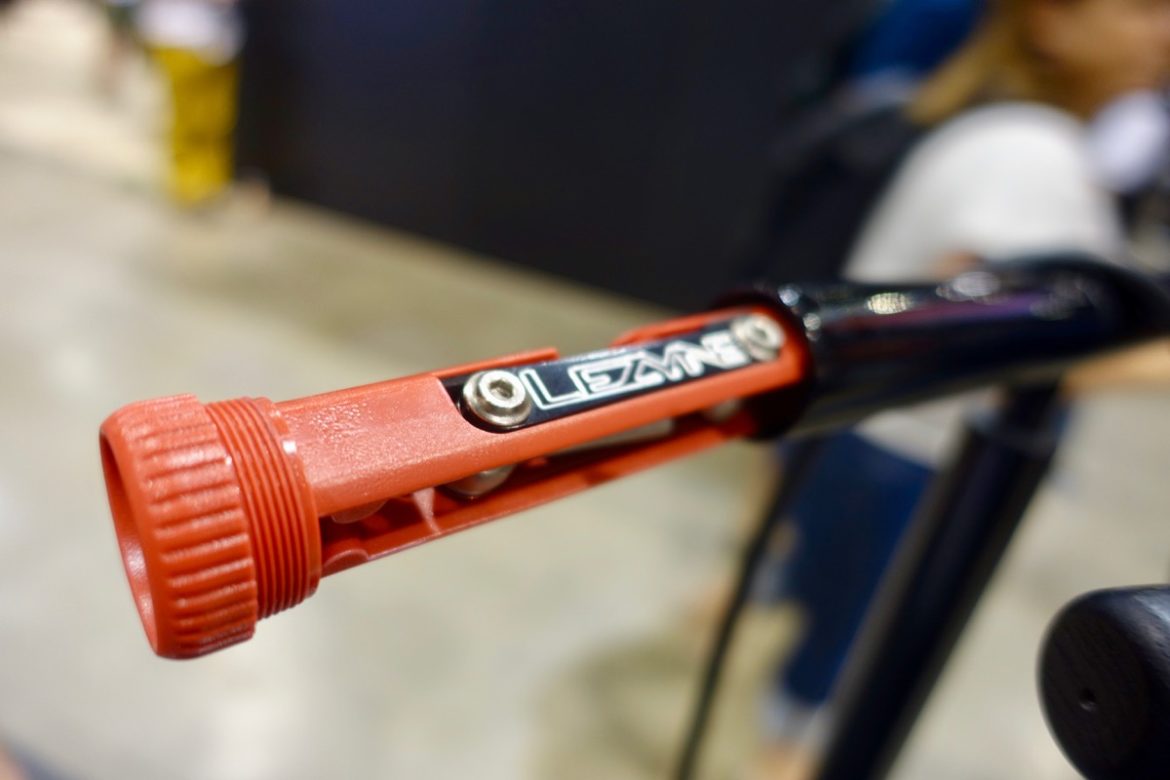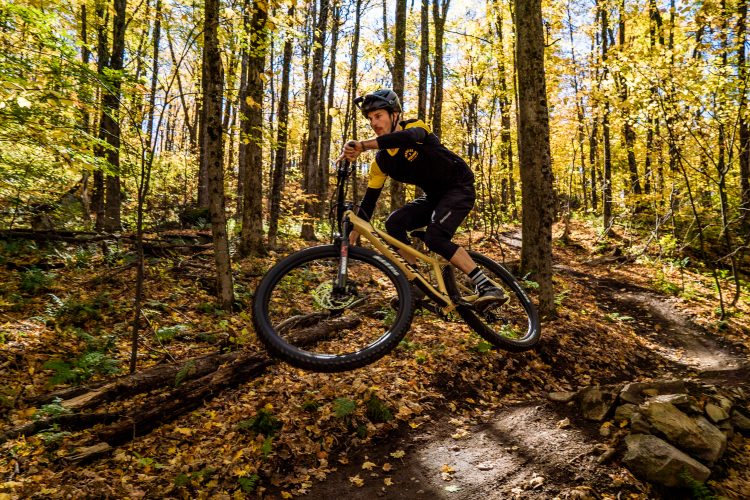It’s a new year. Twenty-eighteen has come and gone, and the crew at Singletracks is more than excited about what’s to come!
We, like readers, enjoy seeing the new mountain bikes, riding newly opened trails, and seeing our favorite athletes break records and barriers. Our sport changes direction more than we think about and all these teeny, incremental changes equal a slightly different sum every year.
Here are our guesses about what will change, what will come, and what will go away.
Gear and tech

Both Matt and Jeff suggest we’ll see more affordable mountain bike gear in 2019. Real prices for bike gear have been falling, plus more manufacturers are beginning to sell direct to consumers, which puts pricing pressure on name brands. Not only do we predict more affordable options at the low end, but we also expect to see better apparel, gear, and bikes at lower price points.
Gerow thinks fewer riders will be opting to ride with backpacks, thanks to expanding options for on-bike storage for accessories, tools, and hydration. He also suggests MIPS or some type of rotational force protection will become standard on most mountain bike helmets rather than a more expensive option.
[see_also id=’247261′]
Matt and Gerow agree that coil shocks and even coil forks will become more popular this year. Riders are interested in the advantages coil shocks have over pure air shocks, so we’ll continue to see companies meeting this demand and even designing products that integrate the advantages of both. This shift could also open the door for smaller competitors to the established suspension suppliers like Fox and RockShox.
Over the past few years riders have been opting to add things like coil shocks, dropper posts, and meatier tires despite the weight penalty. The tradeoff is more than worthwhile for most, but it’s possible we’ll start to see some pushback and a re-evaluation of whether some of these items are truly worth their weight. At the very least, we suspect we’ll see more marketing geared toward the weight savings side of the equation as riders find themselves with bikes weighing more than they would like.
Clearly electronics are becoming a bigger and bigger part of our lives, and bike components are no exception. Matt says we’ll see more electronic bike parts like dropper posts, drivetrains, and electronic suspension. None of us will be surprised to see further attempts at digitizing and “appifying” the mountain bike experience.
[see_also id=’247197′]
There don’t appear to be any major new hub standards on the horizon, but we expect to see more brands adopt the relatively niche SuperBoost Plus standard.
Of course it’s unlikely mountain bike cassettes will be stuck at 12 sprockets forever, though it doesn’t appear we’ll see 13, 14, or 15 speeds this year.
Mountain bikes
The trend toward more affordable mountain bike gear will affect mountain bike offerings on a few fronts.
First, Matt predicts we’ll see more full-suspension bikes priced under $3,000. That’s an important barrier for a lot of buyers, and as suspension and drivetrain technology matures, it’s sure to trickle down to make bikes in that price range capable enough to do just about anything.
We’ll also see more aluminum. After almost disappearing from numerous product lines, aluminum is making a comeback and offers an affordable option that brands are rediscovering. Check the models from Devinci, Specialized, Rocky Mountain, Cannondale and others. If brands want to sell more, and grow the sport, they will find ways to offer great bikes to everyone.
Hardcore hardtails will continue to gain in popularity, and we expect to see new models introduced. Hardtails offer a more affordable option in keeping with the trend, but they’re also more capable than ever thanks to progressive geometry, wider/burlier tires, and even dropper posts.
[see_also id=’232834′]
Speaking of geometry, Matt predicts that while geometry will keep changing, head tube angles won’t get much slacker and bottom brackets won’t get any lower. However, expect to see seat tube angles go a bit steeper.
Gerow thinks more brands will drop “women’s specific bikes” in favor of smaller sizes and specific tunes and builds on unisex bikes based on size rather than gender.
Matt says the quality of direct-to-consumer brands could suffer as they struggle to keep pace with sales and customer service. Meanwhile, Gerow suggests more brands, even established ones, will use crowdfunding to test the market for new and innovative products.
Finally, Jeff predicts e-bike ridership will continue to grow in the US and eMTB riders will win significant land access battles.

Culture and trails

The entire Singletracks staff agrees that 2019 will see even more women’s only MTB events worldwide thanks to support from the industry and overall growth in this demographic. Along those lines, we also expect to see even more women represented in mountain bike advertising, marketing, and media.
[see_also id=’241300′]
Jeff and Matt sadly predict that local bike shops will continue to struggle as more direct-to-consumer brands launch, and existing brands quietly roll out their own direct sales models.
On the trail front, Jeff says we should see more “local” trails being proposed and built. People are tired of spending so much time driving to great trails and will demand challenging (and fun!) trails closer to home. IMBA seems to be on board with this trend based on their recent messaging.
Like it or not, Matt predicts we’ll see more flow trails built around the world in 2019. Jeff thinks we’ll also see more long distance bikepacking routes established, as local communities continue to see the value in mountain bike tourism.
In addition, we predict more ski resorts will add summer lift-served bike terrain, and some may drop winter operations altogether to focus on biking exclusively. This is due in part to changing weather patterns, as well as increased interest in biking. Brand new, commercially operated bike-only parks will pop up as well.
Finally, Gerow says e-bikes will probably put some shuttle providers in the EU out of business. With eMTBs, whether rented or owned, riders can essentially self-shuttle some of the most popular routes without the need for a van ride.
[see_also id=’246711′]

Racing

Our staff is somewhat in disagreement about the future of mountain bike racing in 2019. Gerow and Jeff both predict enduro races will become more popular at the expense of other formats ranging from XC to DH. Matt, however, says enduro will actually shrink and condense, especially in regions that already that have a packed race season. Too many enduro races in certain regions challenge available dates among a small amount of available locations. (We’re looking at you, Colorado.)
As a result, Matt thinks XC racing will grow in the US. XC is “cool again,” thanks to more media representation, better bike tech, exciting athletes, and NICA. He even predicts more DH races will pop up, especially with a World Cup stop in the US.
[see_also id=’219240′]
Gerow says we’ll see more elite DH racers move to Enduro, due to increasing sponsorship and job opportunities as the format matures. He also thinks multi-day enduro races, like Trans Savoie, or the Trans BC, will gain attention as riders continue to use them as competition and vacation in one. The trend toward larger, destination/experience races will attract first time racers and riders who aren’t necessarily competitive.
Your turn: What do you think we’ll see more or less of in 2019?














2 Comments
Jan 10, 2019
Jan 10, 2019